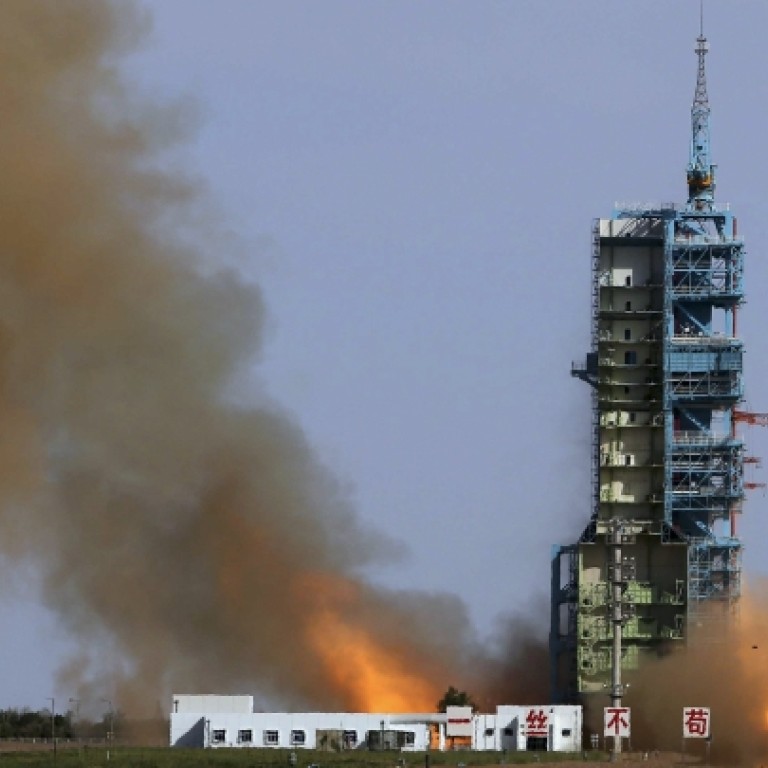
Smooth launch for Shenzhou X crew on China's longest manned space mission
President Xi bids farewell to the three astronauts before the start of a marathon mission to reunite with the orbiting Tiangong module
The Shenzhou X spacecraft blasted off from the Gobi Desert yesterday, taking three astronauts on China's longest manned space mission.
The two men and one woman will spend a couple of days in the cramped cockpit before docking with the orbiting Tiangong I module, where Major Wang Yaping, the woman crew member, will present a physics lesson about microgravity to children back on earth.
The spacecraft, carried via a Long March 2F rocket, launched precisely on schedule at 5.38pm from the Jiuquan Satellite Launch Centre in Inner Mongolia and soon entered its designated orbit.
Just before the launch, President Xi Jinping met the three astronauts at the launch centre, and said he had every confidence in the crew.
"I wish you success and look forward to your triumphant return," Xi said.
Wang, Major General Nie Haisheng and Senior Colonel Zhang Xiaoguang will spend 15 days in space on what has been described as a "routine service mission".
To reach Tiangong I, Shenzhou X will automatically fire its thruster rockets and change orbit several times. China has not yet acquired the technology used by missions to the International Space Station that could cut the chase to just a few hours.
It promises to be an uncomfortable few days for the crew before they reach Tiangong I. They will have to share a tiny toilet similar to a vacuum cleaner in the Shenzhou X orbital module and sleep in turns in a single sleeping bag pinned to a wall.
Nie is the only member of the crew to have been in space before. He was a member of the Shenzhou VI mission eight years ago, but that was much shorter and less complicated.
He is the commander of the Shenzhou X mission and will be responsible for making decisions in any emergency, space authorities said. He will also manually dock the orbital module with Tiangong I .
Zhang joined the Chinese astronaut training programme at the same time as Nie, but has had to wait more than a decade to get his first, and very likely last, ticket to space. "I believe that in this great era of our time, success always belongs to those who never give up," Zhang said.
Zhang's job on the mission is probably the most labour intensive of the three. He will be in charge of steering the spacecraft and will also be the principal cameraman in Tiangong I.
Wang would monitor instrument readings, officials said.
The Jiuquan launch centre erupted in cheers after yesterday's successful launch, with celebratory fire crackers set off and banquets held.
But the future of China's largest space launch centre is under a cloud, because it will soon be eclipsed by an even bigger one in Wenchang , Hainan , which is nearing completion.
Lu Jinron, the chief engineer at Jiuquan, said Wenchang would definitely have an impact on Jiuquan. Launches for the construction of a space laboratory would still be carried out by Jiuquan, but Wenchang would take over the heavy lifting job for China's ambitious space station project, scheduled for completion by 2020, he said.
"Jiuquan will still be responsible for all manned launches," he said. "We have more experience. We also have sunnier weather. We can provide absolute safety to the astronauts."

